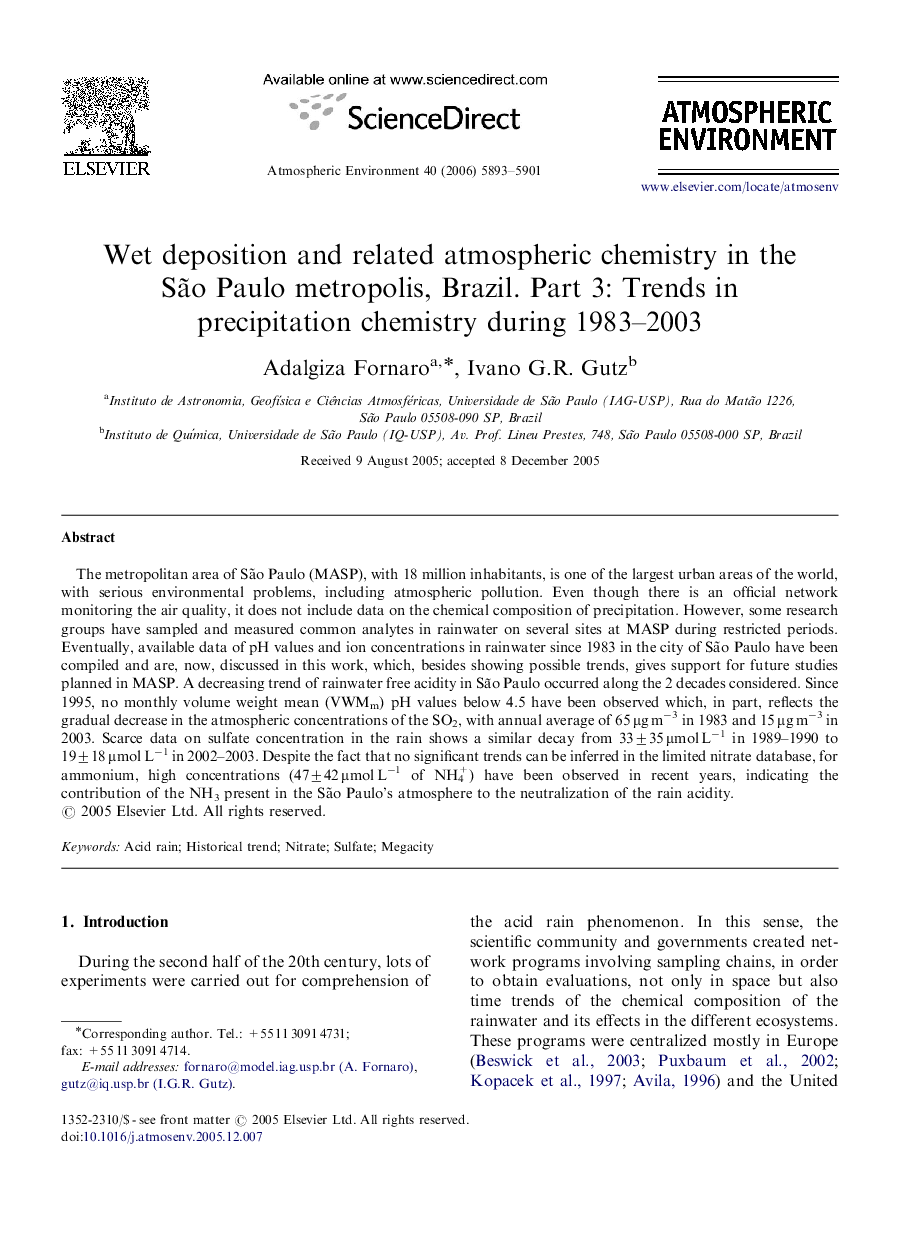| Article ID | Journal | Published Year | Pages | File Type |
|---|---|---|---|---|
| 4444283 | Atmospheric Environment | 2006 | 9 Pages |
The metropolitan area of São Paulo (MASP), with 18 million inhabitants, is one of the largest urban areas of the world, with serious environmental problems, including atmospheric pollution. Even though there is an official network monitoring the air quality, it does not include data on the chemical composition of precipitation. However, some research groups have sampled and measured common analytes in rainwater on several sites at MASP during restricted periods. Eventually, available data of pH values and ion concentrations in rainwater since 1983 in the city of São Paulo have been compiled and are, now, discussed in this work, which, besides showing possible trends, gives support for future studies planned in MASP. A decreasing trend of rainwater free acidity in São Paulo occurred along the 2 decades considered. Since 1995, no monthly volume weight mean (VWMm) pH values below 4.5 have been observed which, in part, reflects the gradual decrease in the atmospheric concentrations of the SO2, with annual average of 65 μg m−3 in 1983 and 15 μg m−3 in 2003. Scarce data on sulfate concentration in the rain shows a similar decay from 33±35 μmol L−1 in 1989–1990 to 19±18 μmol L−1 in 2002–2003. Despite the fact that no significant trends can be inferred in the limited nitrate database, for ammonium, high concentrations (47±42 μmol L−1 of NH4+) have been observed in recent years, indicating the contribution of the NH3 present in the São Paulo's atmosphere to the neutralization of the rain acidity.
